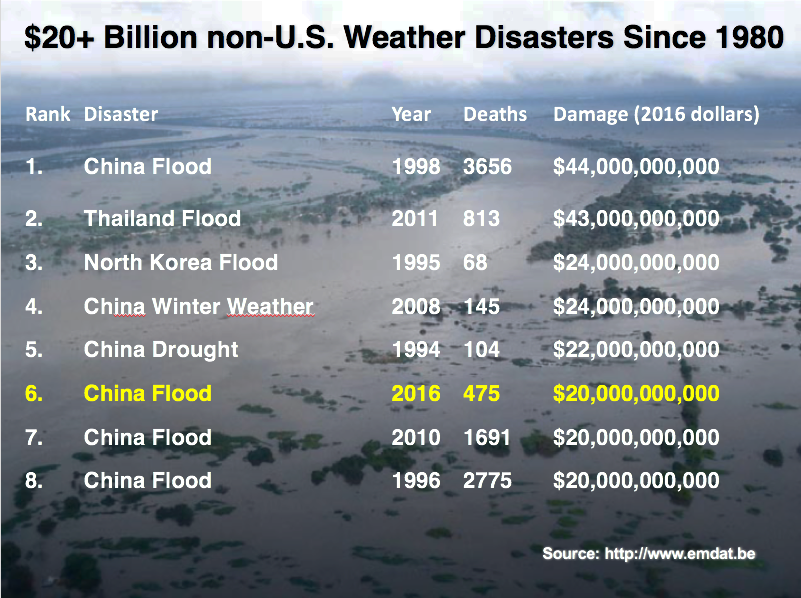| Above: Rescue personnel row past submerged cars in a flooded street in Guiyang, in China's southwest Guizhou province on June 12, 2017. Image credit: STR/AFP/Getty Images. |
Deadly monsoon rains struck China’s Yangtze River basin this week, giving China its first billion-dollar weather disaster of 2017. On June 28, China’s Ministry of Civil Affairs (MCA) reported that 23 people had been killed by the floods, with 8 missing. Damage was estimated at approximately $2.4 billion, according to insurance broker Aon Benfield. Nine provinces were affected, with most of the evacuations coming in Jiangxi Province (299,000 of the 504,000 total evacuations.) A further 110,100 evacuees were in Hunan Province.
The rains peaked on June 22 – 25 along the Mei-yu (or baiu) front, a semi-permanent feature that extends from eastern China across Taiwan into the Pacific south of Japan, associated with the southwest monsoon that pushes northward each spring and summer. The Mei-yu rains typically affect Taiwan and southeastern China from mid-May to mid-June, then migrate northwards to the Yangtze River region and southern Japan during June and July (the Mei-yu is known as Baiu in Japan), and then further northward to northern China and Korea (known as Changma in Korea) during July and August.
China’s Mei-yu rains were far worse last year, with the $20 billion price tag ranking as Earth's most expensive weather-related disaster of 2016--and the sixth most expensive non-U.S. weather-related disaster in world records dating back to 1980. The 2016 Mei-yu rains began in mid-May and peaked in July, causing catastrophic flooding that killed 475.
 |
| Figure 1. Last year’s summer floods in China were tied for the sixth most expensive weather-related natural disaster since 1980 outside of the U.S., according to the International Disaster database, EM-DAT. Insurance broker Aon Benfield computed the damage at a higher figure of $28 billion. |
Worst drought on record in northern China
While China’s Yangtze River Valley grapples with devastating flooding, portions of northern China may soon have a billion-dollar disaster due to the opposite problem: drought. Officials in the northeastern and eastern areas of the Inner Mongolian Autonomous Region, west of Beijing, are calling it the worst drought on record, according to a Thursday New York Times article. Damages are estimated at $780 million in the vast municipal area of Hulunbuir, a rural area with grasslands and herders that borders Russia. The drought was caused by unusually low rainfall since mid-April, along with much above average temperatures that dried out the soil. According to the Beijing Climate Center, May temperatures were 1 – 4° C above average across a large swath of Inner Mongolia, and precipitation was 20 – 80% below average.




